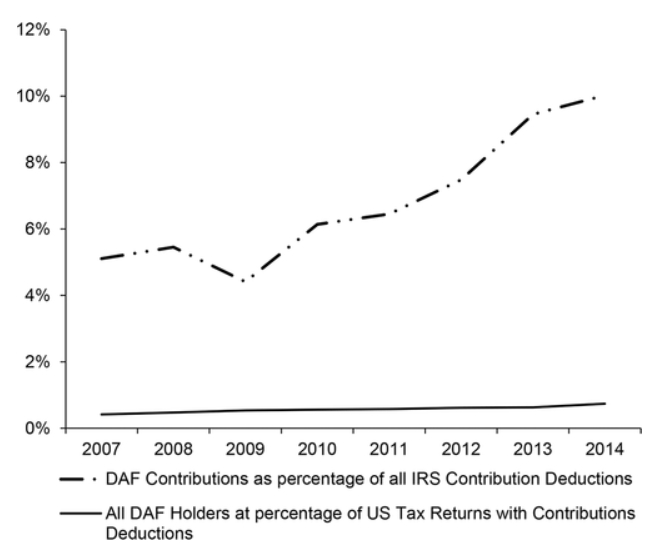The WaPo writes about the ubiquity of microplastics that are in all of us, apparently including human fetuses:
Humans, it became clear, were not only consuming small amounts of microplastics: They might also be breathing them in. Dick Vethaak’s team (VU Amsterdam) began looking for microplastics in the human body — in blood, organs, tissues. “The results were quite shocking,” he said.
Scientists have found microplastics — or their tinier cousins,
nanoplastics — embedded in the human placenta, in blood, in the liver and in the heart and bowels. In one recent study, microplastics were found in every single one of
62 placentas studied; in another, they were found in every artery studied.
But even amid all this research, scientists still don’t have a clear sense of what these materials are doing to the human body. Microplastics could be making us more vulnerable to cancer, heart disease and kidney disease; they could be factors in Alzheimer’s disease or affecting fertility. At the moment, however, scientists just don’t know — and they are in a race against time. And as hundreds of millions of tons of plastics enter the environment every year, it’s a race they might be losing.
Then there are the chemical additives that help to make plastic flame-retardant, flexible or more easily degradable. In a 2021
study, researchers in Switzerland identified more than 10,000 chemicals used in the manufacture of plastic — of which over 2,400 were potentially “of concern” for human health. Plastics can also carry other chemicals not involved in their production: so-called “hitchhikers” absorbed onto plastics and later potentially released into the human body.
What very likely will come next is obvious. We have seen the same game plan play out over and over. Cigarettes, climate change and plastics recycling are examples of the propaganda wars that big businesses engage in when their profits are threatened due to human health and/or environmental damage become public concerns.
Plastics makers will hire professional propagandists (“public relations” or liar companies). The professional liars will confidently tell the public that plastic products are safe and environmental and health concerns are alarmist, socialist hyperbole. They might even deny that microplastics even exist.
On top of the coming propaganda onslaught to bamboozle and distract the public, the plastics polluter companies will mount a mass dark free speech war in the form of “campaign contributions.” In that war against truth, the polluters will hire lobbyists to purchase some key members of congress, state legislatures, governors and presidents. Soon, the bought politicians will be telling us that (1) plastics are safe, while confidently telling us that environmental and health concerns are alarmist, socialist deep state lies and hyperbole, and (2) the scientists and their research is flawed and a pack of alarmist, socialist deep state lies and hyperbole.
We have seen this exact game before. We will probably get to see it again soon. ☠️
PFAS — which stands for per- and polyfluoroalkyl substances — are used in a vast variety of products and have been dubbed “forever chemicals” because of their ability to persist in the environment for years. They keep food from sticking to pans, make raincoats and backpacks water-repellent and help carpets resist stains. And they can also be used to manufacture the plastic blades of grass in artificial turf.
Test results from the San Diego soccer kids experiment found that two of the three players — including Salar Parvini’s daughter, Emma — came off the turf field with higher amounts of PFAS on their hands than at the beginning of the practice. So did Parvini. When the players practiced on natural grass, the results were mixed: Two of them had a decrease in PFAS, while Parvini was found to have more PFAS on his hands. (The new soccer balls also had detectable amounts of PFAS before they were used on both fields.)
In an email, Melanie Taylor, the president and chief executive of the Synthetic Turf Council (STC), a trade association for the industry, pointed to the tests showing the presence of PFAS in soil. She said that companies are looking for a standardized testing method to guarantee their turf products aren’t made with PFAS.
“STC has worked with its members to ensure their products contain no intentionally added PFAS constituents,” Taylor said.
Pipe dreaming: I really want regime change for this country. My regime change vision does not include power in the hands of either major political party in the US today. Those two have failed and betrayed us.
Nonexistent bits of microplastics
(TV ad: They are a healthy pre-biotic source of fiber!)
__________________________________________________________
__________________________________________________________
The NYT published an opinion by Dr. Charan Ranganath, professor of psychology and neuroscience and the director of the Dynamic Memory Lab at the University of California, Davis. He asserts that memory is not mostly for recalling the past. It is mostly for telling us about the present and near future.
Ranganath writes:
I’m a Neuroscientist. We’re Thinking About Biden’s
Memory and Age in the Wrong Way.
As an expert on memory, I can assure you that everyone forgets. In fact, most of the details of our lives — the people we meet, the things we do and the places we go — will inevitably be reduced to memories that capture only a small fraction of those experiences.
It is normal to be more forgetful as you get older. Generally, memory functions begin to decline in our 30s and continue to fade into old age. However, age in and of itself doesn’t indicate the presence of memory deficits that would affect an individual’s ability to perform in a demanding leadership role. And an apparent memory lapse may or may not be consequential, depending on the reasons it occurred.
There is forgetting, and there is Forgetting. If you’re over the age of 40, you’ve most likely experienced the frustration of trying to grasp that slippery word on the tip of your tongue. Colloquially, this might be described as forgetting, but most memory scientists would call this retrieval failure, meaning that the memory is there but we just can’t pull it up when we need it. On the other hand, Forgetting (with a capital F) is when a memory is seemingly lost or gone altogether. Inattentively conflating the names of the leaders of two countries would fall in the first category, whereas being unable to remember that you had ever met the president of Egypt would fall into the second.
Over the course of typical aging, we see changes in the functioning of the prefrontal cortex, a brain area that plays a starring role in many of our day-to-day memory successes and failures. These changes mean that as we get older, we tend to be more distractible and often struggle to pull up words or names we’re looking for. Remembering events takes longer, and it requires more effort, and we can’t catch errors as quickly as we used to. This translates to a lot more forgetting and a little more Forgetting.
The fact is that there is a huge degree of variability in cognitive aging. Age is, on average, associated with decreased memory, but studies that follow up the same person over several years have shown that although some older adults show precipitous declines over time, other super-agers remain as sharp as ever.
Mr. Biden is the same age as Harrison Ford, Paul McCartney and Martin Scorsese. He’s also a bit younger than Jane Fonda (86) and a lot younger than the Berkshire Hathaway C.E.O., Warren Buffett (93). All these individuals are considered to be at the top of their professions, and yet I would not be surprised if they are more forgetful and absent-minded than when they were younger. In other words, an individual’s age does not say anything definitive about the person’s cognitive status or where it will head in the near future.
I can’t speak to the cognitive status of any of the presidential candidates, but I can say that, rather than focus on candidates’ ages per se, we should consider whether they have the capabilities to do the job. Public perception of a person’s cognitive state is often determined by superficial factors, such as physical presence, confidence and verbal fluency, but these aren’t necessarily relevant to one’s capacity to make consequential decisions about the fate of this country. Memory is surely relevant, but other characteristics, such as knowledge of the relevant facts and emotion regulation — both of which are relatively preserved and might even improve with age — are likely to be of equal or greater importance.
Ultimately, we are due for a national conversation about what we should expect in terms of the cognitive and emotional health of our leaders.
And that should be informed by science, not politics.
In this fascinating 18 minute Amanpour & Co. interview, Ranganath talks about the function of memory to orient us to our situation in the present. He also talks about social or collective memory and its role in shaping memories.
- I get a lot of letters from people saying you are telling me not to believe what I have seen with my own eyes. Yes, because you do not know what you are talking about.
- Obvious misinformation should be labeled as such because there is a significant cognitive load to recall if something seen previously was true or false. That aspect of mental ability declines with age. Memory bias tends to reinforce what we believe to be true, even when it is false.








